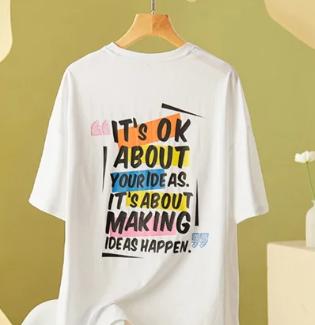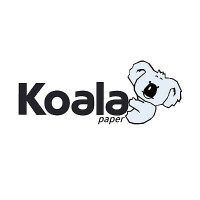Screen Printing Film: The Unsung Hero Behind Every Sharp Print

Strong 8k brings an ultra-HD IPTV experience to your living room and your pocket.
In the world of printmaking, success hinges on precision. From indie T-shirt brands to large-scale industrial workshops, one critical material sits at the heart of every clean stencil and crisp exposure—screen printing film. Often overlooked, this transparent film is responsible for transferring detailed artwork onto screens with accuracy, contrast, and consistency.
But not all films are created equal. In this article, we’ll explore what makes screen printing film effective, how modern waterproof formulations enhance performance, and why choosing the right material is essential for professionals across industries.
________________________________________
What Is Screen Printing Film?
Screen printing film is a transparent substrate—commonly made from PET (polyester)—coated to accept ink from inkjet printers. The film holds your design in deep black ink (positive), which then acts as a stencil during the exposure process. When UV light is applied through the film onto an emulsion-coated screen, only the light-blocked areas will wash out, forming your final printing plate.
A high-quality film ensures:
• Sharp edges with no ink bleed
• Dense black areas (OD value ≥ 3.0)
• Accurate exposure without under- or over-burning
• Flat, stable performance under varying humidity
________________________________________
Why Waterproof Coating Matters
Traditional screen printing films are prone to smudging or ink bleed, especially with dye-based inks or high humidity. Enter the waterproof inkjet film—a game changer in professional printing.
This advanced type of screen printing film features a microporous waterproof coating that absorbs ink rapidly while preventing blurring. It dries in seconds and locks in dense black images for sharp exposure. Whether you use pigment or dye ink, waterproof coatings maintain image fidelity and shorten turnaround time.
________________________________________
Key Features to Look For in Professional Screen Printing Film
If you want reliable results from your exposure unit, your film must meet several technical criteria:
🟡 1. High Optical Density (OD)
A dense black image is crucial for blocking UV light. KoalaPaper’s film delivers OD values above 3.0—ideal for even the most detailed artwork.
🟡 2. Quick Drying & Ink Compatibility
Whether you use dye or pigment inks, drying speed affects workflow. Films from KoalaPaper are engineered to dry within 5–12 seconds without compromising clarity.
🟡 3. Transparency & Contrast
Your background must be clear so light passes cleanly through exposed areas. KoalaPaper film achieves over 80% transparency, ensuring excellent contrast.
🟡 4. Curl Resistance
Inferior films curl after printing, which distorts alignment during exposure. A flat, anti-curl film ensures smooth screen contact and consistent results.
________________________________________
Applications Beyond Apparel
While screen printing film is essential for T-shirt graphics, it plays an equally vital role in a wide range of industries:
• Electronics: PCB circuit board masking and UV exposure
• Label Production: Film positives for screen-printed adhesive labels
• UV Plate Making: High-resolution positives for etching or exposure
• Decal Transfers: Custom art or branding on rigid and flexible surfaces
• Engineering Graphics: Plot overlays and transparencies for design review
This level of versatility makes inkjet film one of the most adaptable tools in modern printing workflows.
________________________________________
Screen Printing Film vs. Non-Waterproof Film: What’s the Difference?
If you're still using non-waterproof film, you're likely familiar with the frustration: ink that smears, exposure errors, and unstable film edges. Waterproof film eliminates these risks with:
• Faster drying time
• Superior black density
• Humidity resistance
• Reduced ink bleeding
• Compatible with high-output workflows
Investing in the best screen printing film for professionals minimizes errors and maximizes efficiency.
________________________________________
Why Choose KoalaPaper Screen Printing Film?
KoalaPaper waterproof film combines all the features screen printers need—durability, performance, and affordability. Our film is manufactured in-house with strict quality control, ensuring each batch meets ISO-like standards for:
• Coating uniformity
• OD consistency
• Film thickness and flatness
• Export-grade packaging with desiccants
We support OEM packaging, private label branding, and flexible sheet or roll formats to fit your business.
________________________________________
FAQ About Screen Printing Film
Q: What printers are compatible with your screen printing film?
A: Inkjet printers like Epson models work best. Avoid thermal inkjets such as older HP or Canon devices.
Q: Is it suitable for both dye and pigment ink?
A: Absolutely. Our waterproof coating accepts both ink types without smearing.
Q: Can this film be used for industrial production?
A: Yes. KoalaPaper film is used by commercial print houses and mass-production garment factories worldwide.
________________________________________
Final Thoughts
Screen printing film might be a behind-the-scenes tool, but it’s one of the most important components in professional printing. From clean edges to consistent exposures, the right film improves every step of the process.
At KoalaPaper, we help printers across industries upgrade their workflows with high-performance waterproof inkjet films. Whether you're printing for apparel, electronics, or signage, our solutions are engineered for success.
Want to learn more about our capabilities or request a wholesale quote?
👉 Contact us today or explore our full product range.
Note: IndiBlogHub features both user-submitted and editorial content. We do not verify third-party contributions. Read our Disclaimer and Privacy Policyfor details.


